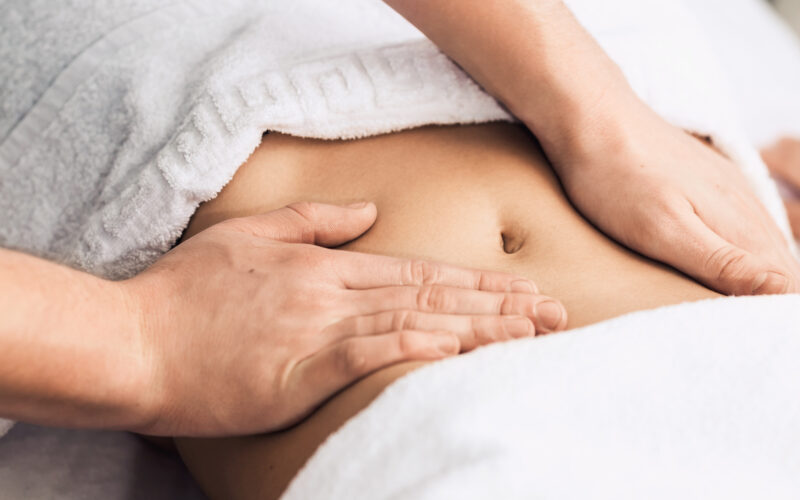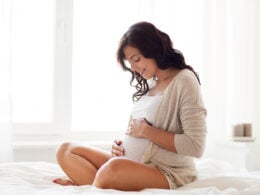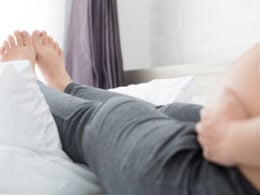For years, I was “treated” for painful periods with the birth control pill. While I was fortunate and didn’t experience any negative side effects while taking birth control, it masked the source of my pelvic pain—endometriosis—for over a decade, until I finally received a diagnosis and excision surgery (all within the same laparoscopic procedure). Surgery can be a painful undertaking, however, so many women with pelvic pain (which may or may not be related to endometriosis) wonder: What non-surgical, non-pharmaceutical treatments for pelvic pain are available for someone who doesn’t want to be on birth control, but isn’t ready for surgery?
Standard treatment options for endometriosis
Endometriosis is an inflammatory condition in which tissue similar to the endometrium (the lining of the inside of the uterus) grows outside of the uterus, creating lesions. These lesions can cause multiple symptoms, the most common and well-known of which is pain.
While the pill is a common treatment for diagnosed endometriosis, it is, at best, a band-aid solution that helps manage symptoms rather than the disease—and it can cause a whole host of side effects. For women who do not want to go on birth control (or for whom birth control proves ineffective at managing the disease), endometriosis surgery may begin to look like an attractive option compared to living in pain. However, surgery (by nature) is invasive, it can be expensive (especially if one must travel to find a reputable doctor who can successfully perform endometriosis surgery), and it will require some time for recovery (more or less, depending on the extent of the disease).
Alternative treatments (i.e., non-pharmaceutical, non-surgical treatments) for pelvic pain, which could be due to endometriosis
The good news is, that while surgery is the only way to eliminate endometriosis, there are ways to help manage symptoms, such as pelvic pain, without the pill and without surgery. In addition to diet, pain medication, and simple things like rest and heating pads, here are five additional or alternative approaches to treating pelvic pain (whether it is due to endometriosis or another condition) that you may not have considered:
1. Massage therapy
Massages aren’t just for spa weekends; they’re also a form of therapy for many conditions, particularly if given by someone who is trained in therapeutic massage, which focuses on helping a specific condition rather than just relaxation. A 2010 study found that massage therapy significantly reduced menstrual pain in 23 patients with endometriosis — a small sample size, but the researchers cited other studies with similar findings.
If you’re interested in trying massage as a non-surgical, alternative treatment for your endometriosis symptoms, look for a practitioner who has experience in helping people with chronic pain, and particularly endometriosis, manage their pain with massage.
2. Myofascial release
Myofascial release is a technique often used in massage or physical therapy that focuses on the myofascial tissues—“the tough membranes that wrap, connect and support your muscles,” according to Dr. Brent Bauer of the Mayo Clinic. The therapist identifies myofascial areas that are stiff under light pressure (known as “trigger points”) and applies pressure and stretching techniques to work out that stiffness, using his or her hands or a massage tool like a foam roller or ball.
Interestingly, a 2017 study pointed out that the location of endometriosis lesions isn’t necessarily correlated to the locations of women’s most intense pain. Therefore, while surgery may eliminate the lesions, it may not eliminate all of a woman’s pelvic pain, which can be also caused by myofascial trigger points. The researchers argued that gynecologists treating a woman with endometriosis should also evaluate her for myofascial trigger points. They identified myofascial release as a possible treatment, citing some research indicating it may be effective but noting that there are no randomized, controlled trials investigating it yet.
3. Pelvic floor physical therapy
Pelvic floor physical therapy is a specialized form of physical therapy aimed at the pelvic floor, the group of muscles at the base of your pelvis. It can involve targeted exercises, internal physical therapy (working on the internal muscles), relaxation techniques, and biofeedback. It’s often used to treat conditions such as vaginismus, incontinence, and postpartum complications, as well as endometriosis.
Pelvic floor physical therapy can be uncomfortable at first; after all, you’re dealing with a pretty personal part of the body rather than recovery from a broken leg. In this interview, Sallie Sarrel, PT, ATC, DTT, a pelvic floor physical therapist who specializes in endometriosis, shares some helpful tips on what to look for (and some red flags to stay away from) in a pelvic floor physical therapist. You can also check the American Physical Therapy Association’s Academy of Pelvic Health website, which has resources for patients, including help finding an accredited physical therapist.
4. Counseling
Chronic pain can take a toll on your mental health—and the state of your mental health can, in turn, have a significant impact on your pain levels. As a result, it might be worth seeing a counselor or therapist to help you learn to manage living with pain. A therapist might help you learn relaxation techniques, alter any limiting beliefs you have about pain, identify and practice coping skills, and deal with the anxiety or depressed mood that can come with pain. These techniques are common in cognitive behavioral therapy (CBT), which the Endometriosis Foundation reports can be helpful in managing both pain and the fear of pain.
For example, one limiting belief I’ve had is, “It will always be this way.” It’s natural to feel like your pain will never go away, especially when it is, in fact, chronic. A therapist might help you address this thought and counter it by saying, “I have plenty of good days, too, and another one is right around the corner” or, “I’m working on finding treatment that will help me have more good days.”
5. Exercise
Finally, a recommendation you may not want to hear (I never have!): Exercise can help manage a variety of chronic pain conditions, including endometriosis.
Suggesting exercise as an alternative, non-surgical treatment for endometriosis symptoms might feel like a punishment, or some kind of cruel joke: I’m in pain, and you want me to exercise? But starting slowly and gently, and finding a form of exercise that you enjoy (or, at least at first, tolerate) can help. According to physical therapist Dr. Jim Palmer, the best exercise is the one that you actually want to do, so experiment with different forms of exercise to find one you actually look forward to.
That said, there are some forms of exercise that might be a good place to start, including aerobic exercise like walking, bicycling, or swimming; low-impact exercise like yoga or pilates (which can be great for strengthening your core); and stretching (particularly if you’re working with a pelvic floor physical therapist, who can recommend specific stretches for your pelvic pain).
Finding hope as you search for comprehensive endo treatment
Pelvic pain can be due to causes beyond endometriosis, but the only way to definitively diagnose the source is through laparoscopic surgery. Surgery can be a good option for many women, but these alternative therapies for pelvic pain can also help bring you some relief—from both your pain and the feeling that it will never leave you.
Additional reading:
How I got help with endometriosis without the Pill
The Difficulties of Diagnosing and Categorizing the Stages of Endometriosis
5 Lesser Known Symptoms of Endometriosis You Might Not Know About
Endometriosis, Miscarriage Risk, and Hope for Healing
Endometriosis and Autoimmune Disease: What’s the Connection?











